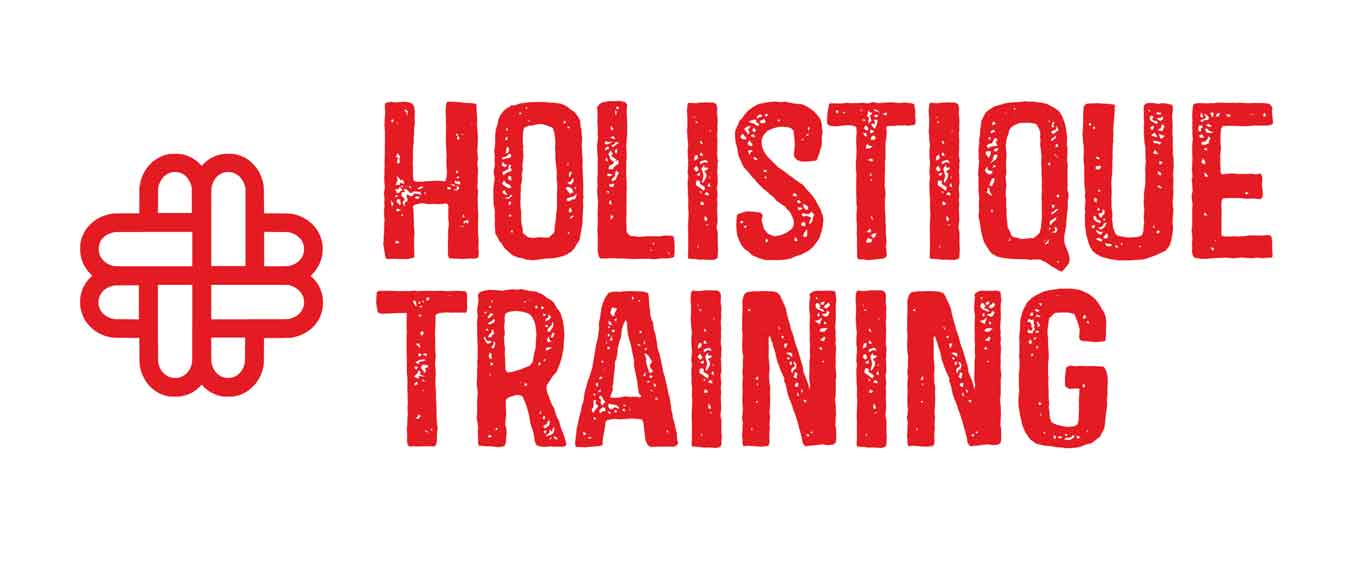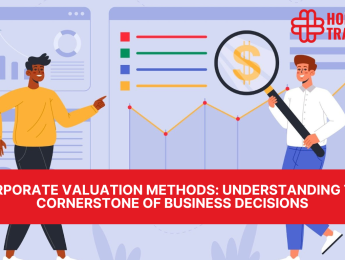- Table of Contents
- Introduction
- What Is Corporate Valuation and How Does It Work?
- Why Is Corporate Valuation Important?
- 1. Facilitating Investment Decisions
- 2. Enabling Successful Mergers and Acquisitions
- 3. Supporting Fundraising Efforts
- 4. Enhancing Strategic Planning
- 5. Guiding Succession Planning and Exit Strategies
- 6. Ensuring Compliance and Tax Planning
- 7. Uncovering Hidden Risks and Opportunities
- 8. Building Trust with Stakeholders
- 9. Setting Realistic Goals and Expectations
- 10. Aligning with Industry Benchmarks
- Common Corporate Valuation Methods
- Discounted Cash Flow (DCF) Analysis
- Multiples Method
- Market Valuation
- Comparable Transactions Method
- Times Revenue Method
- Earnings Multiplier
- Book Value
- Liquidation Value
- EBITDA Method
- Using the Results of Corporate Valuation to Determine Next Steps
- 1. Shaping Investment and Growth Strategies
- 2. Informing Mergers, Acquisitions, and Divestitures
- 3. Guiding Fundraising Efforts
- 4. Planning for Exit Strategies
- 5. Enhancing Operational Efficiency
- 6. Strengthening Negotiation Positions
- 7. Evaluating Market Position and Competitiveness
- 8. Aiding Financial Planning and Budgeting
- 9. Navigating Legal and Regulatory Requirements
- 10. Building Trust with Stakeholders
- How to Determine Which Method Is Best for Your Business
- 1. Understand the Purpose of the Valuation
- 2. Evaluate the Nature of Your Business
- 3. Assess the Availability and Reliability of Data
- 4. Consider the Time Horizon and Future Potential
- 5. Factor in Market Comparisons
- 6. Account for Intangibles and Non-Financial Factors
- 7. Balance Accuracy and Simplicity
- 8. Align with Stakeholder Expectations
- 9. Combine Methods When Necessary
- 10. Consult Experts for Guidance
- The Role of a Monitoring and Evaluation Specialist in Corporate Valuation
- 1. Data Integrity and Quality Control
- 2. Evaluating Performance Metrics
- 3. Monitoring Long-Term Goals and Projections
- 4. Impact Evaluation
- 5. Providing Objectivity and Independent Insights
- 6. Continuous Monitoring Post-Valuation
- Conclusion
Introduction
Assessing the true worth of a company is more than a financial exercise—it is a strategic endeavour that drives decision-making for investors, business owners, and stakeholders. Corporate valuation provides the tools to measure a company’s value, ensuring that business decisions are grounded in sound financial understanding. This blog explores the essence of corporate valuation, its importance, the methods commonly used to determine value, and how to apply these insights for strategic growth and decision-making.
What Is Corporate Valuation and How Does It Work?
Corporate valuation refers to the process of determining the overall economic value of a business. It is an intricate blend of financial analysis, market research, and strategic forecasting. This valuation helps answer critical questions: How much is a company worth? Is it worth investing in? Should it consider merging, acquiring, or divesting?
The valuation process works by gathering financial data, understanding market trends, and analysing both tangible and intangible assets. Tangible assets include physical holdings like real estate, machinery, or cash reserves, while intangible assets encompass brand value, intellectual property, or goodwill. These components are then measured using various methodologies, depending on the purpose of the valuation and the industry in which the company operates.
Why Is Corporate Valuation Important?
Corporate valuation is a cornerstone of strategic decision-making, offering profound insights into a company's financial health, market position, and growth potential. Understanding its significance requires a deeper dive into the various scenarios where valuation plays a pivotal role:
1. Facilitating Investment Decisions
Investors, whether individuals or institutions, rely on corporate valuation to make informed choices. Valuation provides a clear picture of a company’s current worth, its growth trajectory, and its potential to generate returns. It helps answer critical questions such as:
- Is the stock price fair, undervalued, or overvalued?
- Should an investor buy, sell, or hold shares in the company?
- Does the company align with the investor's risk tolerance and financial goals?
For example, a high-growth startup might have a promising future but could be overvalued in the short term, signalling caution to potential investors. Conversely, an undervalued firm might present a lucrative opportunity for long-term gains.
2. Enabling Successful Mergers and Acquisitions
Corporate valuation is indispensable inmergers and acquisitions (M&A). It helps both buyers and sellers understand the worth of the company being acquired or merged.
For buyers, it ensures they are not overpaying for an acquisition, which could negatively impact their balance sheet. Sellers benefit by knowing their company’s true value, preventing undervaluation during negotiations. In some cases, valuation can also uncover synergies—areas where the combined entities will create greater value than operating separately.
3. Supporting Fundraising Efforts
For businesses seeking external funding, accurate valuation is critical. Startups and growing companies need to showcase their potential to venture capitalists, angel investors, or private equity firms. A well-conducted valuation demonstrates the company’s worth and its growth potential, instilling confidence in investors.
Moreover, valuation results determine the equity offered in exchange for investment. Overvaluation could deter investors, while undervaluation might lead to giving away too much equity unnecessarily.
4. Enhancing Strategic Planning
Understanding a company’s value lays the groundwork for effectivestrategic planning. Business owners can assess their strengths and weaknesses, identify profitable segments, and allocate resources efficiently.
For example, if a valuation highlights that a particular division or product line is underperforming, the company can decide to improve, sell, or discontinue that segment. Similarly, a valuation that reveals strong performance in a niche area may prompt the business to double down on growth strategies in that space.
5. Guiding Succession Planning and Exit Strategies
Corporate valuation is vital for long-term planning, particularly for family-owned businesses or companies preparing for leadership transitions. Knowing the value of the company helps stakeholders:
- Develop a succession plan that aligns with financial goals.
- Prepare for the eventual sale or transfer of ownership, ensuring a smooth transition and fair compensation.
Exit strategies also depend heavily on accurate valuation, whether it’s through a sale, merger, or public listing.
6. Ensuring Compliance and Tax Planning
Corporate valuation is often a legal or regulatory requirement in scenarios such as tax compliance, estate planning, or resolving disputes. For example:
- Tax Compliance: Businesses must report fair valuations to avoid penalties or scrutiny from tax authorities.
- Litigation: Valuation reports serve as crucial evidence in disputes over ownership, divorce settlements, or bankruptcy proceedings.
- Estate Planning: For family-owned enterprises, valuation ensures equitable distribution among heirs.
7. Uncovering Hidden Risks and Opportunities
A thorough valuation process often reveals more than just financial metrics. It uncovers hidden risks, such as:
- Overreliance on a single revenue stream.
- Vulnerabilities to market changes or economic downturns.
- Operational inefficiencies that erode profit margins.
On the flip side, valuation might highlight opportunities, such as untapped markets, underutilised assets, or potential for strategic partnerships.
8. Building Trust with Stakeholders
Transparent and accurate valuation fosters trust among stakeholders, including shareholders, employees, and creditors. When stakeholders are confident in the company’s valuation, they are more likely to support its initiatives, whether it’s raising funds, entering new markets, or expanding operations.
9. Setting Realistic Goals and Expectations
Valuation anchors business expectations in reality. By understanding their worth, companies can set achievable goals, avoid overambitious plans, and create strategies grounded in financial feasibility.
10. Aligning with Industry Benchmarks
Valuation also serves as a benchmarking tool. By comparing a company’s metrics with industry averages or competitors, business owners can assess their market position and make adjustments to remain competitive.
For instance, if a valuation shows that a company’s EBITDA multiple is below the industry standard, it might indicate operational inefficiencies or branding issues that need addressing.
In essence, corporate valuation is a multipurpose tool that goes beyond mere numbers. It empowers companies to chart a course for growth, manage risks, and maintain transparency, ensuring sustainable success in an ever-changing business environment.
Common Corporate Valuation Methods
Corporate valuation methods are essential tools for determining the worth of a business, and each method is uniquely suited to different scenarios, industries, and business models. Let’s explore these methods in greater detail, delving into their processes, applications, and any associated formulas.
Discounted Cash Flow (DCF) Analysis
Discounted Cash Flow (DCF) is one of the most comprehensive and widely used valuation methods. It focuses on estimating a company’s intrinsic value by projecting its future cash flows and then discounting them to their present value. The discounting process accounts for the time value of money, reflecting the fact that a dollar today is worth more than a dollar in the future due to potential earning capacity.
The formula for DCF is:
DCF=t=1nCFt1+rt+TV1+rn
Where:
- CFt = Cash flow in year
- r = Discount rate (often the Weighted Average Cost of Capital, or WACC)
- TV = Terminal value, which estimates the value of the business beyond the forecasted period
- n = Total number of forecasted years
DCF is highly detailed and allows for the inclusion of numerous assumptions, such as growth rates, cost of capital, and risk. However, its accuracy depends on the quality of the input data. Small changes in assumptions can significantly alter the results, making expertise in financial modelling critical for its application.
Multiples Method
The multiples method is a simple and quick way to value a company by comparing its financial metrics to those of similar businesses. This approach is popular due to its reliance on market-based data, making it intuitive and easy to communicate.
For example, a commonly used multiple is the Price-to-Earnings (P/E) ratio, which is calculated as:
P/E=Market Price per ShareEarnings per Share
Similarly, the Enterprise Value-to-EBITDA (EV/EBITDA) ratio measures a company’s value relative to its earnings before interest, taxes, depreciation, and amortisation:
EV/EBITDA=Enterprise ValueEBITDA
By applying these multiples to a company’s metrics, its valuation can be estimated. For instance, if the average P/E ratio in an industry is 15 and a company’s earnings per share is $2, its valuation could be $30 per share. While simple, this method relies on finding truly comparable peers and assumes market efficiency.
Market Valuation
Market valuation, also referred to as market capitalization, is straightforward and often used for publicly traded companies. It is calculated by multiplying the company’s current stock price by the total number of outstanding shares:
Market Valuation = Stock Price Outstanding Shares
This method is readily available for public companies, providing a snapshot of how the market perceives their value. However, it is influenced by market sentiment, which may not always align with the company’s intrinsic worth, especially during periods of volatility.
Valuation Method | Description | Best Used For |
Discounted Cash Flow (DCF) | Values based on projected future cash flows. | Businesses with stable cash flow forecasts. |
Multiples Method | Uses market multiples to estimate company value. | Quick valuations, especially for comparable firms. |
Market Valuation | Based on current market price of similar assets. | Publicly traded companies or assets. |
Comparable Transactions | Compares similar past transactions for pricing. | Mergers, acquisitions, and investments. |
EBITDA Method | Uses earnings before interest, taxes, and depreciation. | Companies with stable earnings profiles. |
Comparable Transactions Method
The comparable transactions method evaluates a company based on the sale prices of similar businesses in the same industry or market. This method is commonly used in mergers and acquisitions to provide a benchmark for valuation.
For instance, if a business in the same sector was recently sold for 2x its annual revenue, and the company being valued generates $10 million in revenue, its value might be estimated at $20 million.
While this approach is grounded in real-world data, its accuracy depends on the availability of relevant and recent transaction data. Differences in market conditions, company size, or strategic positioning can also affect its applicability.
Times Revenue Method
The times revenue method involves applying a multiplier to the company’s annual revenues. This multiplier is usually industry-specific and reflects the growth potential and risk profile of businesses in that sector.
For example, a software company with annual revenues of $5 million might be valued at 4x revenue, resulting in a valuation of $20 million. While straightforward, this method does not consider profitability or cost structures, making it less suitable for businesses with high expenses or thin margins.
Earnings Multiplier
The earnings multiplier refines the commonly used P/E ratio by factoring in a company’s growth potential and risk. It estimates the company’s worth by applying a multiplier to its net earnings.
For example, if a business generates $2 million in net earnings and the applicable multiplier is 8, its valuation would be $16 million. This method is particularly useful for companies with consistent and predictable earnings, but it can be less reliable for businesses in volatile or emerging markets.
Book Value
Book value represents the net asset value of a company as recorded on its balance sheet. It is calculated as the difference between total assets and total liabilities:
Book Value = Total Assets - Total Liabilities
This method is particularly relevant for asset-heavy industries, such as real estate or manufacturing, where tangible assets form a significant portion of the company’s value. However, it may undervalue businesses with substantial intangible assets, such as intellectual property or brand equity.
Liquidation Value
Liquidation value estimates how much a company would be worth if its assets were sold off and its liabilities settled immediately. This method is often used in bankruptcy scenarios or when evaluating distressed companies.
For example, a company with $10 million in assets and $6 million in liabilities would have a liquidation value of $4 million. While it provides a conservative estimate of value, it often does not reflect the ongoing operations or future potential of a business.
EBITDA Method
The EBITDA (Earnings Before Interest, Taxes, Depreciation, and Amortisation) method focuses on a company’s operating performance, excluding non-operational expenses. This method calculates value by applying an industry-specific multiplier to the company’s EBITDA:
EBITDA Valuation = EBITDA Multiplier
For example, if a business generates $3 million in EBITDA and the applicable multiplier is 5, its valuation would be $15 million. This approach is widely used in mergers and acquisitions due to its focus on core profitability and cash flow.
Each valuation method has its strengths and limitations. Choosing the right approach depends on the business context, the availability of data, and the purpose of the valuation. By understanding these methods in depth, businesses can make informed decisions that align with their strategic objectives.
Using the Results of Corporate Valuation to Determine Next Steps
Corporate valuation is not merely an academic exercise; it is a practical tool that informs strategic decision-making. Once a business’s value has been determined, the insights gleaned from the process can guide a variety of actions to optimise operations, strengthen market position, or plan for the future. Here’s how the results of corporate valuation can be utilised effectively:
1. Shaping Investment and Growth Strategies
The valuation process provides a detailed understanding of a company’s strengths and weaknesses. By analysing the components of the valuation, businesses can identify areas ripe for investment and growth.
For instance, if the valuation highlights strong cash flow but limited revenue growth, the company may consider expanding its product lines, entering new markets, or increasing marketing efforts. Conversely, a valuation showing robust revenue growth but low profitability might prompt a reassessment of operational costs or pricing strategies.
Valuation results can also highlight competitive advantages, such as superior technology or market leadership, which can be leveraged to attract strategic partnerships or expand market share.
2. Informing Mergers, Acquisitions, and Divestitures
Corporate valuation is critical when planning mergers, acquisitions, ordivestitures. For a company looking to acquire another business, the valuation helps determine a fair offer price and ensures that the deal aligns with long-term financial goals. It also identifies potential synergies, such as cost savings or revenue enhancements, that the acquisition might bring.
For businesses considering selling a division or subsidiary, valuation results provide clarity on what price to expect and how the transaction will impact the overall organisation. Similarly, if the valuation reveals underperforming segments, divestiture might be a viable option to streamline operations and focus on core competencies.
3. Guiding Fundraising Efforts
Valuation results are integral to attracting investors or securing loans. For example, a high valuation signals stability and growth potential, making the company more attractive to venture capitalists, private equity firms, or lenders.
The valuation also determines how much equity a company should offer to investors in exchange for funding. For startups and small businesses, demonstrating a realistic yet compelling valuation can make the difference in securing needed capital.
Additionally, valuation insights help entrepreneurs craft compelling narratives for investor pitches, focusing on areas of strength and addressing potential risks transparently.
4. Planning for Exit Strategies
For business owners planning to exit, whether through sale, merger, orinitial public offering (IPO), valuation results play a central role. The valuation not only determines the business's worth but also helps identify the most advantageous exit strategy.
For example, if the valuation indicates strong future earnings potential, an IPO might be a lucrative option. Alternatively, if the valuation reveals market vulnerabilities, a private sale or merger with a stronger partner could be more suitable.
Exit planning also involves considering how to structure the transaction to maximise returns while minimising tax liabilities, and valuation results provide the baseline for these discussions.
5. Enhancing Operational Efficiency
The detailed analysis conducted during a corporate valuation often uncovers operational inefficiencies or areas where the company is underperforming. Management can use this information to streamline processes, reduce costs, or reallocate resources.
For instance, if the valuation reveals a low return on investment (ROI) in specific business units, management can evaluate whether to improve their performance or reallocate resources to higher-performing areas. Similarly, inefficiencies in supply chain operations or inventory management might come to light, prompting corrective action.
6. Strengthening Negotiation Positions
Accurate valuation results empower businesses in negotiations, whether with investors, partners, or acquirers. For example, during funding rounds, a clear understanding of the company’s value ensures that founders do not dilute their equity excessively.
Similarly, when negotiating a sale or merger, a robust valuation provides evidence to support the asking price, reducing the risk of undervaluation. It also instils confidence in potential buyers or investors by demonstrating transparency and a deep understanding of the business.
7. Evaluating Market Position and Competitiveness
Valuation often involves benchmarking against competitors or industry standards. This comparative analysis can reveal how the company is positioned in the market relative to its peers.
For example, if the valuation shows that a company’s EBITDA multiple is significantly lower than industry averages, it might indicate operational inefficiencies or weaker branding. The company can use this insight to improve its market positioning, refine its value proposition, or enhance customer engagement strategies.
8. Aiding Financial Planning and Budgeting
Corporate valuation provides a clear picture of the company’s financial health, guiding future budgeting and financial planning. For instance:
- If the valuation highlights strong cash reserves, the company might consider reinvesting in R&D or acquiring new assets.
- If debt levels are high relative to assets, the business might prioritise debt reduction strategies.
The insights also help in setting realistic financial goals, such as achieving specific revenue milestones or improving profit margins, ensuring that planning aligns with the company’s current and projected capabilities.
9. Navigating Legal and Regulatory Requirements
In some cases, valuation results are required for compliance with legal or regulatory mandates, such as estate planning, divorce settlements, or bankruptcy proceedings. Accurate valuation ensures that all parties involved are treated fairly and that the business adheres to applicable laws.
10. Building Trust with Stakeholders
Transparent and well-supported valuation results build trust with internal and external stakeholders. For employees, it demonstrates that the company is committed to long-term success, potentially improving morale and retention. For creditors and shareholders, it reassures them of the company’s stability and growth prospects, fostering continued support.
The results of corporate valuation are a roadmap, offering actionable insights into a company’s current state and future potential. Whether it’s refining operations, pursuing growth opportunities, or preparing for significant transactions, leveraging these results ensures that decisions are data-driven, strategic, and aligned with broader business objectives.
How to Determine Which Method Is Best for Your Business
Choosing the most suitable corporate valuation method for your business requires a strategic approach, as it depends on the purpose of the valuation, the nature of the business, and the available data. Each valuation method has its strengths and limitations, and the decision-making process involves understanding these nuances while aligning them with your business objectives.
1. Understand the Purpose of the Valuation
The first step is to define why the valuation is needed. Different purposes call for different methods:
- Selling the business: If you are preparing to sell your company, potential buyers will likely want to see a valuation based on methods such asDiscounted Cash Flow (DCF) orComparable Transactions to assess future earnings or market value.
- Attracting investors: Venture capitalists or equity investors may prefer methods like theMultiples Method orEBITDA Method, which offer a quick snapshot of financial performance.
- Internal decision-making: If you’re using valuation to guide strategic growth, methods likeDCF Analysis orEarnings Multiplier may provide more detailed insights into future profitability.
- Liquidation or bankruptcy: When determining how much value can be recovered, methods such asLiquidation Value orBook Value become more relevant.
Understanding the end goal will help narrow down the methods that best align with your objectives.
2. Evaluate the Nature of Your Business
Different businesses have unique characteristics that influence the choice of valuation method:
- Startup companies: For early-stage startups, traditional financial data might be limited. Methods like theTimes Revenue Method orMarket Valuation may be more appropriate, as they focus on growth potential and market positioning.
- Asset-heavy companies: Businesses with significant tangible assets, such as manufacturing firms or real estate companies, may benefit from methods likeBook Value orLiquidation Value, which focus on physical assets.
- Service-oriented companies: Service-based businesses, which often rely on human capital and intangible assets, may find methods likeDCF Analysis orEBITDA more relevant, as these focus on cash flow and profitability.
By understanding the industry and operational model, you can identify methods that highlight the aspects most relevant to your company’s value proposition.
3. Assess the Availability and Reliability of Data
The accuracy of any valuation method depends on the quality and completeness of the data used. Some methods require detailed and precise inputs, while others are less data-intensive:
- Data-heavy methods: Techniques likeDCF Analysis demand extensive financial forecasting, such as future cash flows, discount rates, and growth rates. If these data points are unavailable or unreliable, the results may be skewed.
- Simpler methods: If financial data is limited or historical records are incomplete, methods likeMultiples orMarket Valuation may be more practical, as they rely on straightforward metrics such as revenue or comparable company valuations.
Understanding your access to relevant data is crucial in choosing a method that delivers accurate and actionable results.
4. Consider the Time Horizon and Future Potential
The time horizon over which the valuation is conducted can influence the choice of method:
- Short-term focus: If you are evaluating a company for near-term decisions, methods likeBook Value orLiquidation Value may suffice. These methods focus on immediate tangible assets and liabilities.
- Long-term focus: For decisions involving future growth and profitability, such as securing investors or planning mergers, methods likeDCF Analysis orEarnings Multiplier provide a forward-looking perspective.
Companies with strong growth potential should prioritise methods that emphasise future earnings, while those in mature or declining stages may rely on present asset values.
5. Factor in Market Comparisons
If your business operates in a competitive industry, comparing its performance and value to peers can provide important context. Methods like theComparable Transactions Method orMarket Valuation rely on benchmarking against similar companies, making them highly useful when market data is available.
For example, if competitors in your industry are valued at a 5x EBITDA multiple, this benchmark can help set realistic expectations for your business's valuation. However, if your business has unique aspects that differ significantly from peers, methods focusing on internal metrics, such asDCF Analysis, might be more appropriate.
6. Account for Intangibles and Non-Financial Factors
Traditional valuation methods often struggle to account for intangibles like brand reputation, intellectual property, or customer loyalty. If these play a significant role in your business’s value, methods such asDCF Analysis (with adjustments for intangibles) or customised approaches that incorporate these elements might be needed.
7. Balance Accuracy and Simplicity
While some methods are highly detailed and accurate, they can also be complex and time-consuming. If time and resources are limited, simpler methods likeMultiples orTimes Revenue can provide a quick estimate. However, for high-stakes decisions, investing the time and effort in more comprehensive methods likeDCF Analysis is often worth the additional precision.
8. Align with Stakeholder Expectations
The valuation method should resonate with the expectations of the intended audience. For example:
- Investors or buyers may prefer methods commonly used in their industry, such asComparable Transactions.
- Lenders might prioritise tangible asset valuations likeBook Value to assess collateral.
By understanding the perspective of the stakeholders, you can select a method that aligns with their expectations and facilitates smoother negotiations.
9. Combine Methods When Necessary
In some cases, relying on a single method might not provide a complete picture. Combining methods can enhance reliability and offer a well-rounded perspective. For example:
- UseDCF Analysis to forecast future cash flows andMarket Valuation to benchmark against competitors.
- PairBook Value withEarnings Multiplier to balance tangible assets with profitability potential.
When combining methods, ensure that the results are weighted appropriately based on their relevance to the business scenario.
10. Consult Experts for Guidance
Corporate valuation can be complex, and determining the best method often requires expertise. Engaging financial analysts, valuation experts, or investment bankers can provide insights tailored to your business’s unique circumstances. These professionals bring industry-specific knowledge and experience, helping you select the most appropriate valuation method.
Selecting the right valuation method is both an art and a science. It requires a clear understanding of the business's goals, the industry landscape, and the available data. By thoughtfully evaluating these factors, businesses can choose a method that not only captures their true value but also serves as a foundation for sound decision-making.
The Role of a Monitoring and Evaluation Specialist in Corporate Valuation
A Monitoring and Evaluation (M&E) specialist plays a vital role in corporate valuation by ensuring that the data used in the valuation process is accurate, reliable, and reflective of the company’s true performance. While corporate valuation often focuses on financial metrics and market comparisons, an M&E specialist brings a structured, evidence-based approach to assess both the qualitative and quantitative aspects of a business.
1. Data Integrity and Quality Control
M&E specialists are trained to track, measure, and verify the accuracy of data. For corporate valuation, this is crucial as the data inputs directly impact the final valuation results. The specialist ensures that the financial records, historical data, and projections used in methods like DCF analysis or Earnings Multipliers are valid and come from credible sources. Their oversight guarantees that the valuation reflects the true state of the business without discrepancies or errors in reporting.
2. Evaluating Performance Metrics
While financial data like revenue, profit margins, and EBITDA are central to corporate valuation, M&E specialists also consider broader performance indicators. These can include customer satisfaction, employee engagement, and operational efficiency. By monitoring these metrics, an M&E specialist ensures that qualitative factors influencing a company’s value—such as brand reputation, management quality, or innovation—are properly considered in the valuation process. These non-financial elements can significantly affect long-term value, especially for businesses driven by intangible assets.
3. Monitoring Long-Term Goals and Projections
For valuation methods such as Discounted Cash Flow (DCF), future cash flows are projected based on assumptions about the company’s performance. An M&E specialist’s role here is to assess how realistic these projections are, ensuring they align with historical trends and future forecasts. They can also assist in developing performance measurement systems that track whether strategic goals are being met, offering a more accurate picture of future growth and profitability.
4. Impact Evaluation
In scenarios where corporate valuation is used to assess the potential for mergers, acquisitions, or restructuring, an M&E specialist plays an important role in impact evaluation. They analyse the potential outcomes of these decisions on both the financial and operational aspects of the company. This can involve assessing how well different business units or strategies are performing and how those results will influence the overall valuation.
Table: Key Performance Indicators (KPIs) of a Monitoring & Evaluation Specialist
KPI | Description |
Data Accuracy | Ensures all financial data is accurate and reliable. |
Performance Metrics Evaluation | Assesses key business performance indicators. |
Projection Validity | Verifies the realism of financial projections. |
Impact Assessment | Measures outcomes of strategic business decisions. |
Ongoing Monitoring | Tracks continuous business performance and adjustments. |
5. Providing Objectivity and Independent Insights
Corporate valuation processes often involve multiple stakeholders with varying interests. M&E specialists bring an objective, third-party perspective, helping to remove biases and ensuring that the valuation process remains impartial. They focus on evidence-based insights, reducing the risk of inflated or unrealistic valuations that might be driven by subjective factors or internal pressures.
6. Continuous Monitoring Post-Valuation
Even after a corporate valuation is completed, the role of the M&E specialist does not end. They continue to monitor the business's performance, ensuring that any strategies implemented as a result of the valuation are achieving the desired outcomes. This ongoing evaluation helps adjust and refine future valuations, ensuring that the company’s value is continuously reassessed based on current data and performance trends.
In summary, an M&E specialist brings rigorous data analysis, objectivity, and performance evaluation to the corporate valuation process. Their expertise ensures that the valuation is based on solid, verifiable information, enhancing the reliability of the results and providing valuable insights into the long-term potential of the business.
Conclusion
Corporate valuation is more than a financial calculation—it is a strategic tool that shapes the future of businesses and guides critical decisions. Whether you are a startup looking to secure funding, a business preparing for a merger, or an investor seeking clarity, understanding corporate valuation methods equips you with the insights needed to navigate the complex landscape of business. By selecting the appropriate valuation method and leveraging its results, you can align your strategy with your vision, driving growth and success.
























